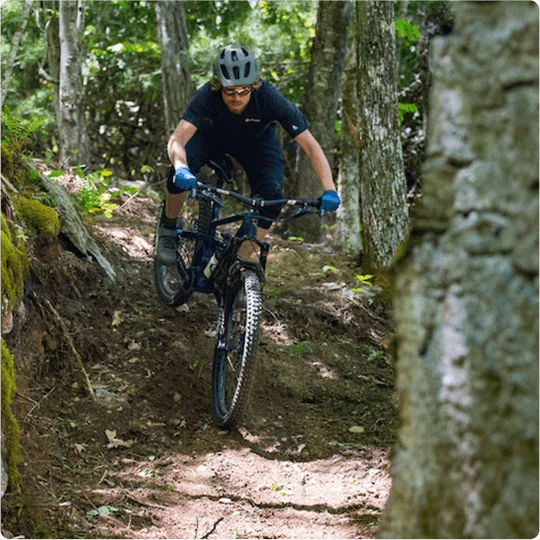Gladly; there are multiple different definitions for sustainable trail design, typically the design is informed by some combination of user groups, local weather patterns and natural terrain. A trail that receives traffic from ORV's in the dessert is going to require completely different design considerations than a hiking only trail in the pacific north west. The US Forest Service has their own very specific guidelines for trail development, similarly specific state agencies hold their own guidelines.
General rules of thumb are never to cut trail down a fall line and to always cut trail across a hillside utilizing a "bench-cut" This is done in an effort to curb the impacts of erosion driven primarily by running water. Trail builders spend a huge chunk of their time analyzing the landscape and thinking about how water moves across it. Sustainable trails are generally not cut across slopes that exceed a 14% grade and ideally incorporate long sight lines to avoid user collisions and allow for ample time to brake with out skidding. Grade reversals are also incorporated to better manage speed without the need for braking.
Plattekills trails are old school downhill race trails, they were developed before IMBA's "Trail Solutions" were the guiding principals for MTB trail design. They follow steep fall lines and make very little consideration for water, often they resemble a creek or begin to look rutted. There is nothing wrong with trails like this on private land that see relatively little traffic, IMO they are super fun and unique trails in a time when everything is becoming a "flow" trail. The issue is when trails like the ones at Plattekill are built rouge on public lands, too much traffic makes them erode to the point of no return sometimes all the way down to raw bedrock, faster speeds and poor sight lines also make for negative user interactions.
I could go way deeper if you like and I am sure RA has plenty to add as a private contractor, I come from a background of public non for profit trail agencies here in the North East. Land managers have a lot to play into what trail is sustainable and what is not, I'm personally very happy I don't have to deal with the conflict rich west with the BLM, NFS, ranchers, bikes, mining interest, and motorized use all butting heads.





